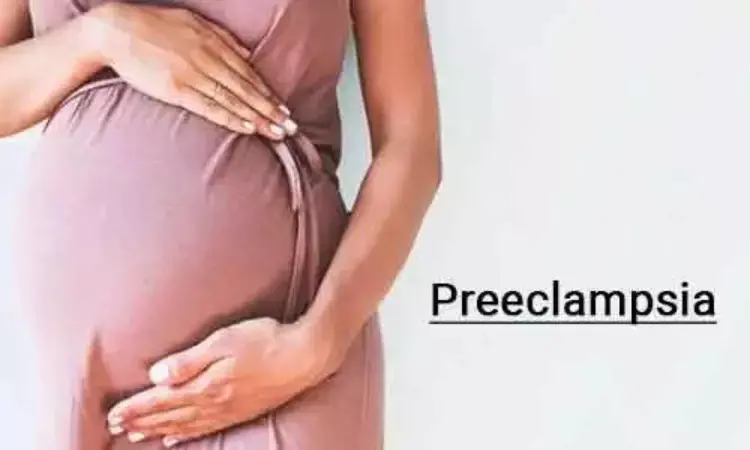- Home
- Medical news & Guidelines
- Anesthesiology
- Cardiology and CTVS
- Critical Care
- Dentistry
- Dermatology
- Diabetes and Endocrinology
- ENT
- Gastroenterology
- Medicine
- Nephrology
- Neurology
- Obstretics-Gynaecology
- Oncology
- Ophthalmology
- Orthopaedics
- Pediatrics-Neonatology
- Psychiatry
- Pulmonology
- Radiology
- Surgery
- Urology
- Laboratory Medicine
- Diet
- Nursing
- Paramedical
- Physiotherapy
- Health news
- Fact Check
- Bone Health Fact Check
- Brain Health Fact Check
- Cancer Related Fact Check
- Child Care Fact Check
- Dental and oral health fact check
- Diabetes and metabolic health fact check
- Diet and Nutrition Fact Check
- Eye and ENT Care Fact Check
- Fitness fact check
- Gut health fact check
- Heart health fact check
- Kidney health fact check
- Medical education fact check
- Men's health fact check
- Respiratory fact check
- Skin and hair care fact check
- Vaccine and Immunization fact check
- Women's health fact check
- AYUSH
- State News
- Andaman and Nicobar Islands
- Andhra Pradesh
- Arunachal Pradesh
- Assam
- Bihar
- Chandigarh
- Chattisgarh
- Dadra and Nagar Haveli
- Daman and Diu
- Delhi
- Goa
- Gujarat
- Haryana
- Himachal Pradesh
- Jammu & Kashmir
- Jharkhand
- Karnataka
- Kerala
- Ladakh
- Lakshadweep
- Madhya Pradesh
- Maharashtra
- Manipur
- Meghalaya
- Mizoram
- Nagaland
- Odisha
- Puducherry
- Punjab
- Rajasthan
- Sikkim
- Tamil Nadu
- Telangana
- Tripura
- Uttar Pradesh
- Uttrakhand
- West Bengal
- Medical Education
- Industry
Preeclampsia in first trimester linked to higher spontaneous preterm birth risk: AJOG

A recent research published in the American Journal of Obstetrics and Gynecology unveiled a highly effective method for predicting preterm birth risk in the first trimester of pregnancy. This study was conducted by the Fetal Medicine Foundation that indicates a combination of maternal risk factors, mean arterial pressure, uterine artery pulsatility index and placental growth factor which can accurately identify women at risk for preterm preeclampsia.
This study highlights the critical role of early screening in anticipating the complications during pregnancy. Thereby, this screening method offers a valuable tool for clinicians to intervene and reduce the risks by detecting signs of placental dysfunction that often precedes preterm birth.
This secondary analysis of data from the Screening Programme for Pre-eclampsia trial examined over 10,000 cases of spontaneous labor onset in pregnant women. The participants were categorized into low, intermediate and high-risk groups based on their estimated risk for preterm preeclampsia in the first trimester. The outcomes revealed a significant correlation between the level of risk and the gestational age at onset of spontaneous delivery.
The women classified as high-risk faced a fourfold increase in the spontaneous birth risk between 24 to 26 weeks gestation when compared to those in the low-risk group. The risk was three times higher at 28 to 32 weeks and twice as high at 34 to 39 weeks. These results elucidate the critical importance of early identification and proactive management in high-risk pregnancies. Overall, the study emphasized the implications of these outcomes for antepartum counseling, monitoring and interventions by focusing on the personalized care pathways based on early risk assessment.
Reference:
Cavoretto, P. I., Farina, A., Salmeri, N., Syngelaki, A., Tan, M. Y., & Nicolaides, K. H. (2024). First trimester risk of preeclampsia and rate of spontaneous birth in patients without preeclampsia. In American Journal of Obstetrics and Gynecology. Elsevier BV. https://doi.org/10.1016/j.ajog.2024.01.008
Neuroscience Masters graduate
Jacinthlyn Sylvia, a Neuroscience Master's graduate from Chennai has worked extensively in deciphering the neurobiology of cognition and motor control in aging. She also has spread-out exposure to Neurosurgery from her Bachelor’s. She is currently involved in active Neuro-Oncology research. She is an upcoming neuroscientist with a fiery passion for writing. Her news cover at Medical Dialogues feature recent discoveries and updates from the healthcare and biomedical research fields. She can be reached at editorial@medicaldialogues.in
Dr Kamal Kant Kohli-MBBS, DTCD- a chest specialist with more than 30 years of practice and a flair for writing clinical articles, Dr Kamal Kant Kohli joined Medical Dialogues as a Chief Editor of Medical News. Besides writing articles, as an editor, he proofreads and verifies all the medical content published on Medical Dialogues including those coming from journals, studies,medical conferences,guidelines etc. Email: drkohli@medicaldialogues.in. Contact no. 011-43720751


